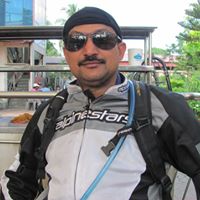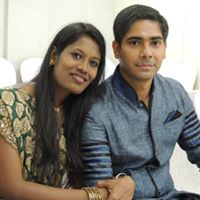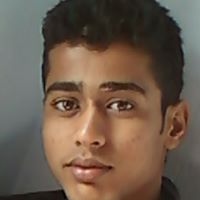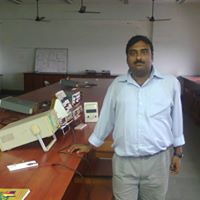Anirban Chatterjee
from Santa Clara, CA
Anirban Chatterjee Phones & Addresses
- Santa Clara, CA
- Atlanta, GA
Work
-
Company:Cisco systems incJan 2011
-
Position:Product management
Education
-
School / High School:Leavey School of Business2007
-
Specialities:Master of Business Administration
Skills
cloud • paas • webservices • SAAS • collaboration • product strategy
Wikipedia References

Anirban Chatterjee
Resumes

Graduate Research Assistant
view sourceLocation:
Atlanta, GA
Industry:
Research
Work:
Georgia Institute of Technology
Graduate Research Assistant
Hochschule Für Technik Stuttgart May 1, 2014 - Jul 19, 2014
Student Intern
Georgia Institute of Technology May 1, 2013 - Jul 1, 2013
Student Intern
Graduate Research Assistant
Hochschule Für Technik Stuttgart May 1, 2014 - Jul 19, 2014
Student Intern
Georgia Institute of Technology May 1, 2013 - Jul 1, 2013
Student Intern
Education:
Indian Institute of Technology, Kharagpur 2010 - 2015
Masters, Master of Technology, Bachelors, Bachelor of Technology, Civil Engineering Ahlcon Public School
Georgia Tech
Masters, Master of Technology, Bachelors, Bachelor of Technology, Civil Engineering Ahlcon Public School
Georgia Tech
Skills:
C
C++
Android Development
Graphic Design
Machine Learning
Data Analysis
Programming
C++
Android Development
Graphic Design
Machine Learning
Data Analysis
Programming
Languages:
English
Hindi
Bengali
German
Hindi
Bengali
German

Health Technology
view sourceLocation:
316 Bricknell Dr, Coppell, TX 75019
Industry:
Consumer Electronics
Work:
Apple Jun 1, 2015 - Feb 2018
Sensor Design Engineer
Apple Jun 1, 2015 - Feb 2018
Health Technology
Slac National Accelerator Laboratory Sep 2014 - Mar 2015
Research Assistant
Microsoft Jun 2014 - Sep 2014
Hardware Design Intern
Slac National Accelerator Laboratory Apr 2014 - Jun 2014
Graduate Research Assistant
Sensor Design Engineer
Apple Jun 1, 2015 - Feb 2018
Health Technology
Slac National Accelerator Laboratory Sep 2014 - Mar 2015
Research Assistant
Microsoft Jun 2014 - Sep 2014
Hardware Design Intern
Slac National Accelerator Laboratory Apr 2014 - Jun 2014
Graduate Research Assistant
Education:
Stanford University 2013 - 2015
Master of Science, Masters, Electrical Engineering Birla Institute of Technology and Science, Pilani 2008 - 2012
Bachelor of Engineering, Bachelors, Electronics Engineering Holy Cross School
Master of Science, Masters, Electrical Engineering Birla Institute of Technology and Science, Pilani 2008 - 2012
Bachelor of Engineering, Bachelors, Electronics Engineering Holy Cross School
Skills:
Perl
Tcl
Signal Processing
Labview
Cadence Virtuoso
Verilog
C
Pspice
Matlab
Modelsim
Vlsi
Vhdl
Spice
Programming
Mixed Signal
Analog Circuit Design
Cadence
Tcl
Signal Processing
Labview
Cadence Virtuoso
Verilog
C
Pspice
Matlab
Modelsim
Vlsi
Vhdl
Spice
Programming
Mixed Signal
Analog Circuit Design
Cadence

Hcm Cloud Functional Lead
view sourceLocation:
Atlanta, GA
Industry:
Information Technology And Services
Work:
Wipro Technologies Dec 2014 - Jan 2, 2019
Associate Functional Consultant
Hexaware Technologies May 2011 - Dec 2014
System Analyst
Wipro Technologies Nov 2008 - May 2011
Project Engineer
Tetrasoft India Pvt Ltd Nov 2008 - May 2011
Hcm Cloud Functional Lead
Associate Functional Consultant
Hexaware Technologies May 2011 - Dec 2014
System Analyst
Wipro Technologies Nov 2008 - May 2011
Project Engineer
Tetrasoft India Pvt Ltd Nov 2008 - May 2011
Hcm Cloud Functional Lead
Education:
West Bengal University of Technology, Kolkata 2008
Bachelors West Bengal University of Technology, Kolkata 2004 - 2008
Bachelors, Bachelor of Technology, Biotechnology Heritage Institute of Technology
Bachelors West Bengal University of Technology, Kolkata 2004 - 2008
Bachelors, Bachelor of Technology, Biotechnology Heritage Institute of Technology
Skills:
Pl/Sql
Peopletools
Peoplesoft
Payroll
Pre Sales
Oracle
Human Resources
Requirements Analysis
Requirements Gathering
Oracle Applications
Production Support
Sdlc
Sqr
Peoplecode
Erp
Business Analysis
Software Development Life Cycle
Peopletools
Peoplesoft
Payroll
Pre Sales
Oracle
Human Resources
Requirements Analysis
Requirements Gathering
Oracle Applications
Production Support
Sdlc
Sqr
Peoplecode
Erp
Business Analysis
Software Development Life Cycle
Certifications:
Oracle

Product Manager Director
view sourceLocation:
316 Bricknell Dr, Coppell, TX 75019
Industry:
Computer Software
Work:
WebEx since Jan 2011
Sr. Product Manager
Sr. Product Manager
Education:
Santa Clara University - Leavey School of Business 2007 - 2009
M.B.A, Marketing, Finance, Entrepreneurship National Institute of Technology Warangal 1993 - 1997
B.Tech, Electronics & Communications
M.B.A, Marketing, Finance, Entrepreneurship National Institute of Technology Warangal 1993 - 1997
B.Tech, Electronics & Communications
Skills:
Smart Phone Integration
Cloud Computing
Web Services
Virtualization Technology
Collaboration
Video Conferencing
Paas
Product Management
Saas
Agile Methodologies
Soa
Software Development
Strategy
Mobile Technology
Go To Market Strategy
Pre Sales
Product Development
Mobile Applications
Enterprise Software
Cross Functional Team Leadership
Software As A Service
Cloud Computing
Web Services
Virtualization Technology
Collaboration
Video Conferencing
Paas
Product Management
Saas
Agile Methodologies
Soa
Software Development
Strategy
Mobile Technology
Go To Market Strategy
Pre Sales
Product Development
Mobile Applications
Enterprise Software
Cross Functional Team Leadership
Software As A Service
Interests:
Animal Welfare
Children
Environment
Children
Environment
Certifications:
Pragmatic Marketing
Pragmatic Marketing Certified – Level V (Pmc-V)
Pragmatic Marketing Certified – Level V (Pmc-V)

Anirban Chatterjee
view source
Jalpaiguri Zilla School
view sourceWork:
Jalpaiguri Zilla School

Anirban Chatterjee
view source
Anirban Chatterjee Sunnyvale, CA
view sourceWork:
Cisco Systems Inc
Jan 2011 to Present
Product Management Oracle
Redwood Shores, CA
2006 to Dec 2010
Senior Product Manager Oracle
Redwood Shores, CA
2002 to 2006
Senior Member of Technical Staff GE Financial Assurance / Satyam
Richmond, VA
2001 to 2002
Senior Software Consultant American Marketing Association / Satyam
Chicago, IL
2000 to 2001
Software Consultant State Farm Insurance / Satyam
Hyderabad, Andhra Pradesh
1997 to 2000
Software Consultant Technical Lead
Jan 2011 to Present
Product Management Oracle
Redwood Shores, CA
2006 to Dec 2010
Senior Product Manager Oracle
Redwood Shores, CA
2002 to 2006
Senior Member of Technical Staff GE Financial Assurance / Satyam
Richmond, VA
2001 to 2002
Senior Software Consultant American Marketing Association / Satyam
Chicago, IL
2000 to 2001
Software Consultant State Farm Insurance / Satyam
Hyderabad, Andhra Pradesh
1997 to 2000
Software Consultant Technical Lead
Education:
Leavey School of Business
2007 to 2009
Master of Business Administration National Institute of Technology
1993 to 1997
Bachelor of Technology in Electronics & Communications Santa Clara University
Santa Clara, CA
2007 to 2009
Master of Business Administration National Institute of Technology
1993 to 1997
Bachelor of Technology in Electronics & Communications Santa Clara University
Santa Clara, CA
Skills:
cloud, paas, webservices, SAAS, collaboration, product strategy
Us Patents
-
Contact Detection For Physiological Sensor
view source -
US Patent:20220401025, Dec 22, 2022
-
Filed:Aug 22, 2022
-
Appl. No.:17/821433
-
Inventors:- Cupertino CA, US
Thomas J. SULLIVAN - San Jose CA, US
Xiaoyu GUO - Santa Clara CA, US
Paras SAMSUKHA - San Jose CA, US
Anirban CHATTERJEE - San Jose CA, US -
International Classification:A61B 5/00
A61B 5/24 -
Abstract:Detecting user contact with one or more electrodes of a physiological signal sensor can be used to ensure physiological signals measured by the physiological signal sensor meet waveform characteristics (e.g., of a clinically accurate physiological signal). In some examples, a mobile and/or wearable device can comprise sensing circuitry, stimulation circuitry, and processing circuitry. The stimulation circuit can drive one or more stimulation signals on one or more electrodes, the resulting signal(s) can be measured (e.g., by the sensing circuitry), and the processing circuitry can determine whether a user is in contact with the electrode(s). Additionally or alternatively, in some examples, mobile and/or wearable device can comprise saturation detection circuitry, and the processing circuitry can determine whether the sensing circuitry is saturated.
-
Contact Detection For Physiological Sensor
view source -
US Patent:20200077954, Mar 12, 2020
-
Filed:Sep 9, 2019
-
Appl. No.:16/565090
-
Inventors:- Cupertino CA, US
Thomas J. SULLIVAN - San Jose CA, US
Xiaoyu GUO - Santa Clara CA, US
Paras SAMSUKHA - San Jose CA, US
Anirban CHATTERJEE - San Jose CA, US -
International Classification:A61B 5/00
-
Abstract:Detecting user contact with one or more electrodes of a physiological signal sensor can be used to ensure physiological signals measured by the physiological signal sensor meet waveform characteristics (e.g., of a clinically accurate physiological signal). In some examples, a mobile and/or wearable device can comprise sensing circuitry, stimulation circuitry, and processing circuitry. The stimulation circuit can drive one or more stimulation signals on one or more electrodes, the resulting signal(s) can be measured (e.g., by the sensing circuitry), and the processing circuitry can determine whether a user is in contact with the electrode(s). Additionally or alternatively, in some examples, mobile and/or wearable device can comprise saturation detection circuitry, and the processing circuitry can determine whether the sensing circuitry is saturated.
-
Force Sensing Using Touch Sensors
view source -
US Patent:20190064983, Feb 28, 2019
-
Filed:Aug 24, 2017
-
Appl. No.:15/686087
-
Inventors:- Cupertino CA, US
Anirban Chatterjee - Santa Clara CA, US -
International Classification:G06F 3/041
G06F 3/044
G02F 1/1333
G02F 1/1343 -
Abstract:An electronic device includes a surface such as a cover glass, a first group of electrodes coupled to the surface and arranged in a first direction with respect to the surface, a second group of electrodes coupled to the surface and arranged in a second direction with respect to the surface, a dielectric separating the first and second groups of electrodes, and a controller electrically connected to the first and second groups of electrodes. The controller is operable to detect a touch of an object to the surface using a mutual capacitance between the first and second groups of electrodes and determine a non-binary amount of force exerted based on resistances of the first and second groups of electrodes.
Googleplus

Anirban Chatterjee
Work:
Gontermann Peipers (I) - Junior Manager (Maint) (14)
Education:
Haldia Institute Of Technology - B.Tech (Mechanical Engineering)
Tagline:
Jabberwocky!!!!!!!!!!!!!!

Anirban Chatterjee
Education:
Techno Global Balurghat - Engineering
Tagline:
For me i only follow: "u start from zero and have a chance 2 become a hero"

Anirban Chatterjee
Work:
Tata Consultancy Services - Assist System Engineer (2009)

Anirban Chatterjee
Education:
De Nobili School, Sindri

Anirban Chatterjee

Anirban Chatterjee
Relationship:
Single

Anirban Chatterjee
Tagline:
THE COOL DUDE

Anirban Chatterjee
Youtube
Myspace
News

IBM Pulls Out of Supercomputer Contract
view source- Anirban Chatterjee, project lead of IBM's Virtual Briefing Center (VBC), said in his July post that the Blue Waters Project supercomputer was being built with POWER7 processors, the same type used in Jeopardy champ Watson.
- Date: Aug 09, 2011
- Category: Sci/Tech
- Source: Google

Anirban Chatterjee
view source
Anirban Chatterjee
view source
Anirban Chatterjee
view source
Anirban Chatterjee
view source
Anirban Chatterjee
view source
Anirban Chatterjee
view source
Anirban Chatterjee
view source
Anirban Chatterjee
view sourceGet Report for Anirban Chatterjee from Santa Clara, CA





